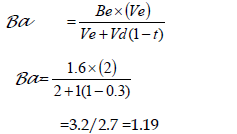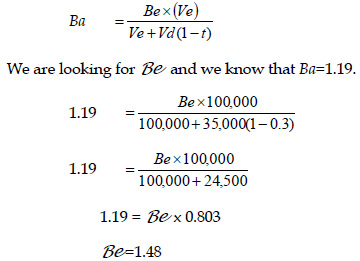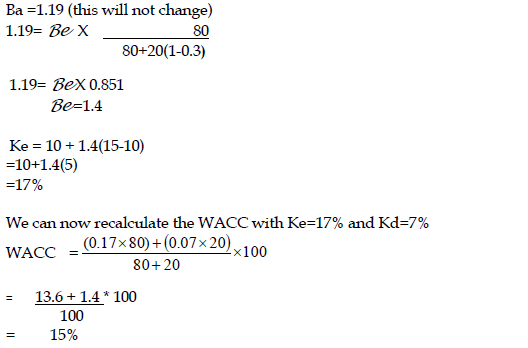Oheneba Limited is considering the acquisition of a concession in the Brong Ahofo region to enable it start a quarry business. The average industry beta is 1.6 with an equity to debt ratio of 2:1.
The following information was extracted from the books of Oheneba Limited

You are also informed that the Long Term Debt of the company is considered risk free with a gross redemption yield of 10% and the beta coefficient of the company’s equity is 1.2 while the average return on the stock market is 15%.
Required:
i) Determine the cost of capital to apply for the appraisal of the quarry if Oheneba Limited will maintain its capital structure after the implementation of the quarry project. (5 marks)
View Solution
The company is moving into a different area and to start a new business and this means the financial risk is likely to change. We need to make adjustments to account for different degrees of financial risk which requires ungearing and regearing the beta.
*The beta of the comparable firms or the industry is first ungeared by removing the effects of its financial risk. This is computed as:

The ungeared beta is called “asset beta” because it reflects the business risk of the assets in that industry.
Once we determine the ungeared beta, we adjust it for the capital structure of the company or project that is the focus of our analysis. In other words, we “regear” the asset beta to arrive at an estimate of the equity beta for the project or company of Interest.

Having estimated a project-specific geared beta, we can use the CAPM to estimate the cost of equity. So using the CAPM, we can estimate the cost of equity:

ii) Determine the cost of capital to apply if the company will change its capital structure to 20% debt and 80% equity. (3 marks)
View Solution

